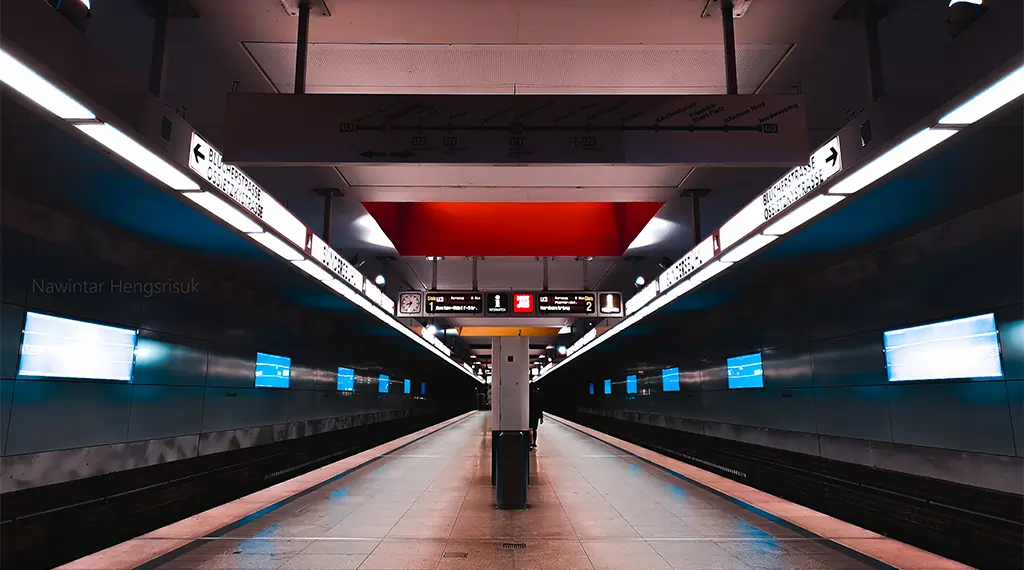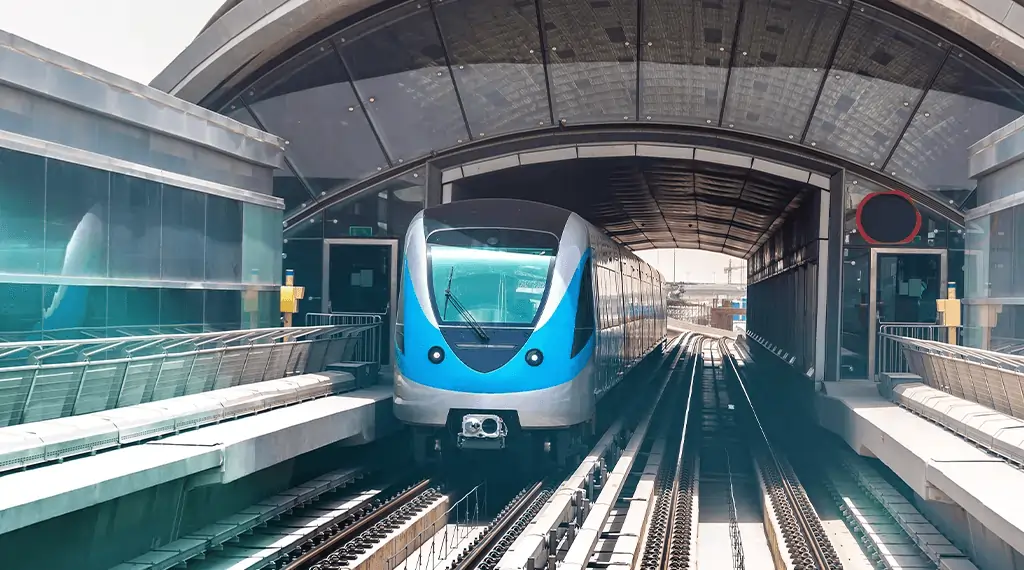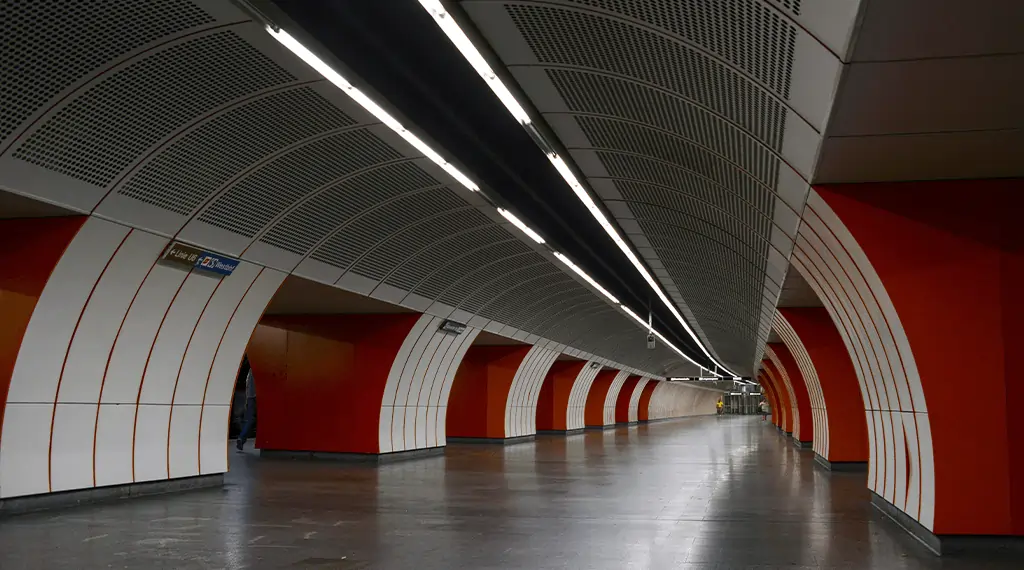
Qutab Minar Metro Station stands as one of the most prominent and strategically located metro stations on the Delhi Metro network. Situated in the southern part of Delhi, this station not only serves as a vital transportation node but also acts as a gateway to some of the city’s most iconic historical and cultural landmarks. Named after the world-famous Qutab Minar, the station blends modern infrastructure with historical grandeur, making it an integral part of the capital’s public transport system. Whether you are a daily commuter, a curious traveler, or a tourist exploring Delhi’s heritage, Qutab Minar Metro Station offers convenience, connectivity, and comfort.
Historical Background
The Qutab Minar area holds immense historical significance, being home to the UNESCO World Heritage Site – the Qutab Minar complex. The metro station itself derives its name from this towering minaret that has stood the test of time since the 12th century. While the metro station is not historical in construction, its proximity to such a monumental piece of history adds to its cultural value.
The station was inaugurated on 21st June 2010 as part of the extension of the Delhi Metro Yellow Line. This extension was a part of the Phase II expansion, which significantly enhanced connectivity between central and southern Delhi. Its construction marked a leap in the Delhi Metro’s mission to integrate modern transit systems with the city’s expansive and densely populated areas.
Location and Connectivity
Qutab Minar Metro Station is located in the Mehrauli area of South Delhi. The station lies on the Yellow Line of the Delhi Metro, which runs from Samaypur Badli in the north to HUDA City Centre in Gurgaon. Its geographic coordinates place it close to major neighborhoods like Mehrauli, Saket, Chhattarpur, and Lado Sarai.
The station’s location makes it highly accessible from both the urban core of Delhi and the adjoining areas of Gurugram. It is also an essential transit point for those visiting various archaeological and religious landmarks in the region. Whether commuting to work, visiting family, or exploring the city’s attractions, the Qutab Minar Metro Station is a practical choice for thousands of passengers daily.
Metro Gates and Facilities
Qutab Minar Metro Station is designed with multiple entry and exit gates that are well-labeled and strategically placed to manage passenger flow efficiently. Typically, the station comprises three to four gates, each leading towards different directions and major landmarks such as the Qutab Minar complex, Mehrauli village, and MG Road.
Each gate is equipped with escalators and staircases to facilitate smooth movement. The concourse area houses token vending machines, smart card recharge stations, and customer service counters. There are also clean and well-maintained restrooms, drinking water facilities, CCTV surveillance, and security personnel deployed for ensuring safety and hygiene.
Apart from these, the station includes tactile paths for visually impaired passengers and ample signage to guide commuters. The station’s architectural design ensures a clutter-free, user-friendly environment with wide platforms and waiting areas.
Public Transport Availability
One of the most remarkable aspects of Qutab Minar Metro Station is its robust integration with other modes of public transportation. Adjacent to the station are dedicated parking spaces for auto-rickshaws and e-rickshaws, offering easy last-mile connectivity.
DTC (Delhi Transport Corporation) buses operate frequently from the station, connecting commuters to various parts of Delhi such as Saket, Hauz Khas, Vasant Kunj, and even far-reaching areas like Connaught Place and Dwarka. Feeder bus services further enhance accessibility, offering convenient and economical travel options for short distances.
Ride-hailing services like Uber and Ola have designated pick-up zones near the station, making it easier for passengers to switch between different modes of transport. The availability of cycle rickshaws and two-wheeler rentals also adds to the versatility of the station as a multi-modal transit hub.
Accessibility Features
Qutab Minar Metro Station is designed to be accessible to all, including senior citizens and persons with disabilities. The station includes several features that make it barrier-free and inclusive.
Lifts are available from street level to the concourse and platform levels, making it easier for wheelchair users and elderly passengers to navigate the station. Ramps and handrails are installed at key access points, and designated seating is available in both the concourse and platform areas.
The station also includes Braille-enabled buttons in elevators and tactile paths to assist visually impaired commuters. Audio announcements and LED display boards provide real-time information about train arrivals and departures, ensuring that all passengers are well-informed during their transit.
Navigating Metro Station
Navigating Qutab Minar Metro Station is relatively simple due to clear signboards, station maps, and directional indicators placed at regular intervals. The station follows a standardized layout that aligns with the design protocols of the Delhi Metro system.
Upon entering the station, passengers encounter the security check area, followed by the token vending and customer service zones. From there, escalators and elevators guide passengers to the platform level.
Digital information panels display train timings, platform numbers, and next train arrivals, making the travel experience seamless. Staff members are always present to assist with inquiries, ticketing issues, or general directions.
For tourists visiting Qutab Minar, directional signs help navigate to the monument, located at a walkable distance from Gate 1. The station also includes tourist-friendly features such as maps and information boards about nearby attractions.
Nearby Markets and Attractions
The Qutab Minar area is a hub of cultural and commercial activity. Tourists and locals alike flock to this region not just to witness the grandeur of the Qutab Minar, but also to explore its vibrant markets, food joints, and historical sites.
Just a few minutes’ walk from the station is the Qutab Minar complex, which includes other historical monuments such as the Iron Pillar, Alai Darwaza, and Quwwat-ul-Islam Mosque. These structures collectively offer a deep dive into the Indo-Islamic architecture of medieval India.
For shopping enthusiasts, the nearby Mehrauli Market and Saket Malls such as DLF Avenue and Select City walk offer everything from traditional wear and artifacts to modern brands and gadgets. The area is also home to several eateries, from local dhabas to upscale restaurants serving a variety of cuisines.
Cultural spots such as the Garden of Five Senses and Zafar Mahal are also easily accessible from the station, making it an ideal stop for those looking to experience Delhi’s heritage, nature, and nightlife in one go.
Nearby Residential and Commercial Properties
Qutab Minar Metro Station serves as a valuable connectivity point for various residential neighborhoods and commercial spaces in South Delhi. Mehrauli, with its mix of old havelis and modern apartments, is a prime residential area near the station. Other nearby localities include Saket, Chhattarpur, Lado Sarai, and Vasant Kunj, all of which are well-developed and offer a mix of housing options.
The presence of the station boosts real estate value and appeal for both homeowners and renters. Working professionals find it convenient to live near this metro station due to the easy access to central business districts and IT hubs in Gurugram.
Commercial establishments such as boutique stores, clinics, coaching centers, and restaurants thrive around the metro station, benefiting from high footfall and visibility. The area also hosts government offices and institutional buildings, contributing to its dynamic urban character.
User Review and Passenger Experience
Regular commuters and first-time visitors often express a high level of satisfaction with their experience at Qutab Minar Metro Station. Cleanliness, safety, and ease of access are frequently highlighted in user feedback. Tourists especially appreciate the station’s proximity to the Qutab Minar complex and the helpfulness of the staff in providing directions.
Many passengers commend the station for being well-maintained and for having a peaceful atmosphere despite its busy nature. The availability of public transport options right outside the station enhances its appeal as a reliable transit hub.
Passengers also appreciate the punctuality and frequency of trains on the Yellow Line, which makes planning their journeys simpler and more efficient. For those exploring Delhi on a short visit, Qutab Minar Metro Station often becomes a convenient launching point.
Security Features
Security at Qutab Minar Metro Station is managed by the Central Industrial Security Force (CISF), which ensures the safety of passengers through rigorous checks and constant surveillance. Baggage scanners and metal detectors are installed at every entrance, and security personnel conduct routine inspections to maintain a safe environment.
The entire station is equipped with CCTV cameras that monitor all key areas including platforms, ticketing counters, and exits. Emergency alarms, help booths, and fire extinguishers are also strategically placed throughout the station.
Additionally, the station follows a strict no-loitering and no-smoking policy, with announcements made regularly to educate passengers about safety protocols. These measures collectively create a secure space for all commuters, regardless of the time of day.
Nearby Metro Stations
Qutab Minar Metro Station is flanked by two other major stations on the Yellow Line: Chhattarpur Metro Station and Saket Metro Station. Both stations are well-connected and serve as alternate entry and exit points for commuters heading in the same direction.
Chhattarpur Station is known for its large parking area and proximity to several temples, including the famous Chhattarpur Temple. Saket Station, on the other hand, is a commercial and entertainment hub, offering easy access to malls, multiplexes, and eateries.
These nearby stations increase the flexibility of travel and reduce congestion during peak hours. Passengers can easily switch between these stations based on their destination and convenience.
Connectivity to Important Locations
Qutab Minar Metro Station offers direct and indirect connectivity to several important locations across Delhi and NCR. On the Yellow Line, passengers can travel directly to areas like Rajiv Chowk, Kashmere Gate, and Civil Lines without needing to change lines.
For travelers heading towards Gurugram, the station serves as a quick access point to major corporate hubs such as Cyber City, MG Road, and IFFCO Chowk. The airport is also accessible via interchange at Hauz Khas (Magenta Line), providing seamless travel for domestic and international flyers. Educational institutions like Jawaharlal Nehru University (JNU) and IIT Delhi are a short commute away. Hospitals such as Fortis and Max Healthcare in Saket are also within easy reach, making the station crucial for emergency and routine medical visits.
Conclusion
Qutab Minar Metro Station is more than just a stop on the Delhi Metro network. It is a bridge between the old and the new, the historical and the contemporary. With excellent connectivity, modern facilities, and proximity to iconic landmarks, the station serves a diverse group of commuters, tourists, and residents.
From ensuring accessibility for all to maintaining a secure and clean environment, Qutab Minar Metro Station exemplifies what a modern urban transit station should be. Whether you’re looking to explore Delhi’s heritage, commute to work, or enjoy a day out shopping, this station is the perfect place to begin your journey. As Delhi continues to evolve, Qutab Minar Metro Station will remain a vital cog in the city’s dynamic transportation system, seamlessly connecting lives, cultures, and experiences.


